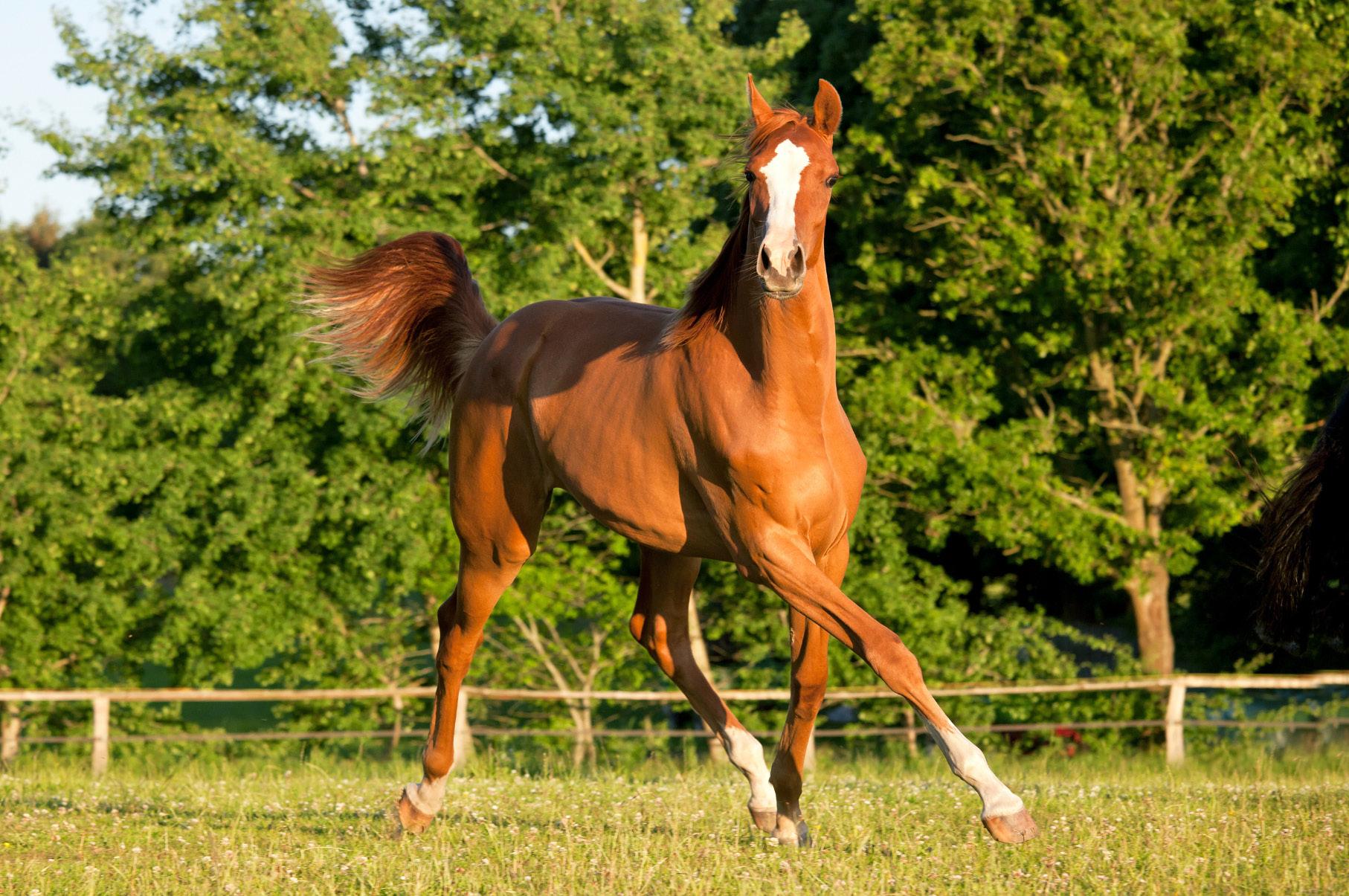
12 minute read
Bits for the breaker
It’s more than fair to say that with all the various types of bits available, the severity of each and every one lies in your hands. As riders, that’s something we all should keep firmly in mind, no matter how old our horses are. And for a young horse being introduced to a bit for the first time, the obvious choice is to opt for one that offers the greatest degree of comfort, and is as safe for that young mouth as possible.
Setting the scene
Before going into greater detail on bits for your young horse, I should first explain why bits and their correct fit are my passion.
I’ve owned and ridden horses for 30 or so years. I was a veterinary nurse for 15 years, and in 2011, I qualified as an equine dentist. It was while working in that profession that I saw numerous mouth injuries caused by bits, which set me off on a new trajectory. I studied first with The International College for Professional Bit Fitting Consultants in The Netherlands, before undertaking courses with Horse Bit Fit UK and with Bombers Bits, at Neue Schule’s The Academy, and with others.
I do not work for a bitting company, nor do I work for a shop or a brand –and this is because I prefer to give an unbiased opinion about the bit and brand I think will be the best option for you and your horse. Essentially, my goal as a bit fitter is to make horses more comfortable and to improve their performance through an ethical approach to bits and bridles, and by teaching riders, who are sometimes frustrated by a lack of results after using increasingly severe bits, that there’s a better approach.
But back to young horses and their bits. The first point I’d like to make is the importance of building a huge amount of confidence around the bit, educating the horse so they learn to be soft into the contact and are happy to follow the contact and the bit without taking advantage of it. Basically, it's all about making sure that they're comfortable and confident with the feeling of a bit in their mouth, and that you, as the rider, don’t make any erratic movements, or apply constant and unrelenting pressure, which is one way to really distress a horse. Building trust and confidence in the bit is a number one priority.
When it goes wrong
I commonly see problems that have originated either in the breaking process or during training, and are the result of practices such as applying constant and unrelenting pressure; using a sudden and strong pressure (using a ten when you could have used a two); not escalating pressure in an appropriate way; and pulling on the mouth for no reason and with no aid in mind. You’ll sometimes see riders jab on their horse’s mouth, and if that’s done when a horse is a breaker, or very early on in their education it will absolutely destroy any confidence in the bit. in which they’re trying to get away from the pressure of the bit because they’ve never been taught what it means.
Communication
Not Control
If a horse lacks that confidence, you’ll get anxiety around the bit which will manifest in behaviours such as chewing the bit, which can be a big and ongoing problem; leaning into the bit; backing off the bit; overbending with the bit – any one of a number of evasive behaviours
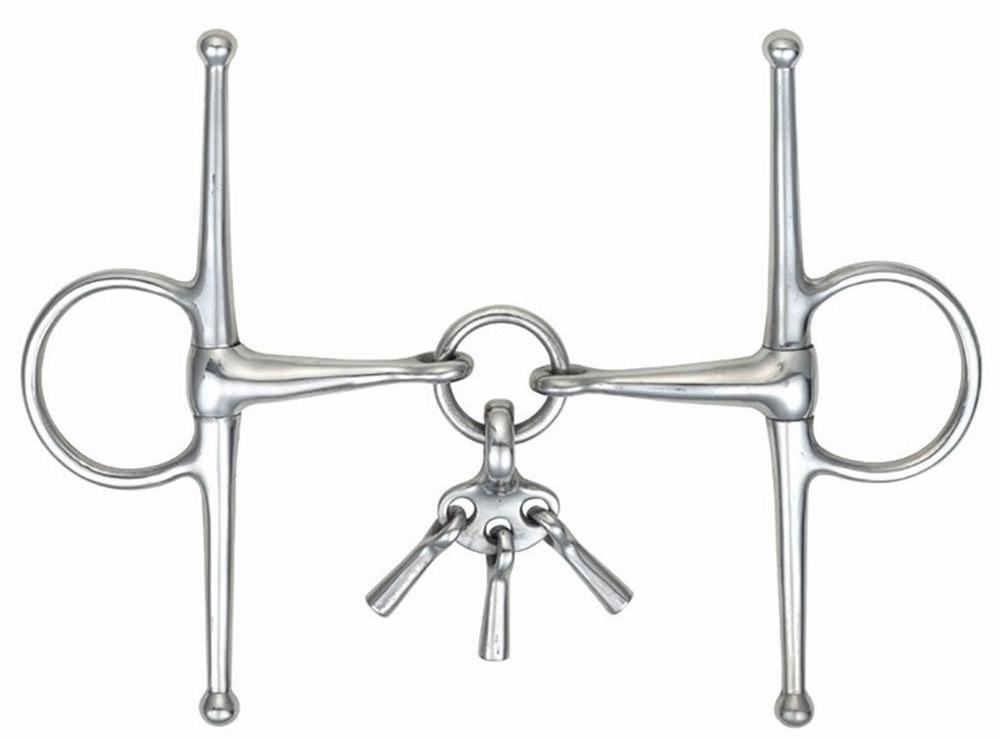
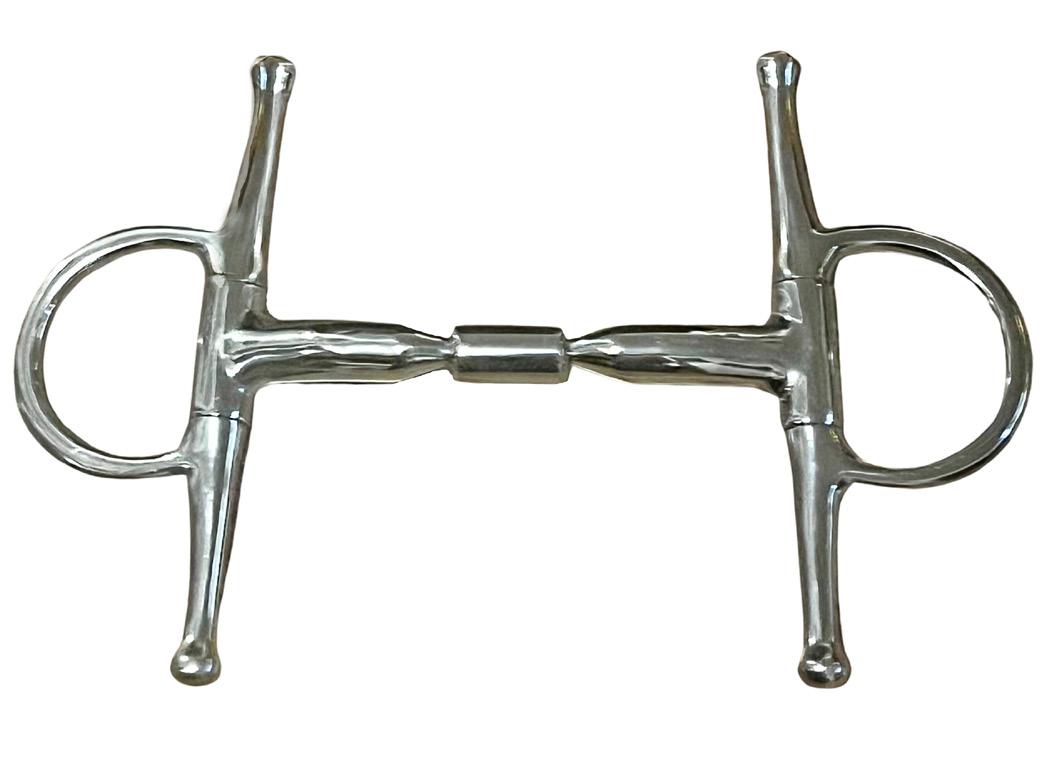
A bit is a communication tool, not a control tool. It’s the way to communicate whether I want their shoulder to move over, whether I want them to go into the hand, whether I want them to stretch down into the contact, and so on. It’s all about communication, but a lot of horses are trained with a bit that has been used as a method of control, and from that you usually don't get a positive outcome. They’re often quite anxious because too much pressure has been applied or applied too quickly. Worse still, horses can continue to be anxious around the bit and to manifest those behaviours for their entire ridden careers if they haven’t been properly trained right from the start.
From the ground up
For breakers, I like the Bombers Moulded Mullen, provided your horse won’t turn it into rubbery snack! At around 16mm it’s quite thin for a rubber bit, and it’s very flexible.
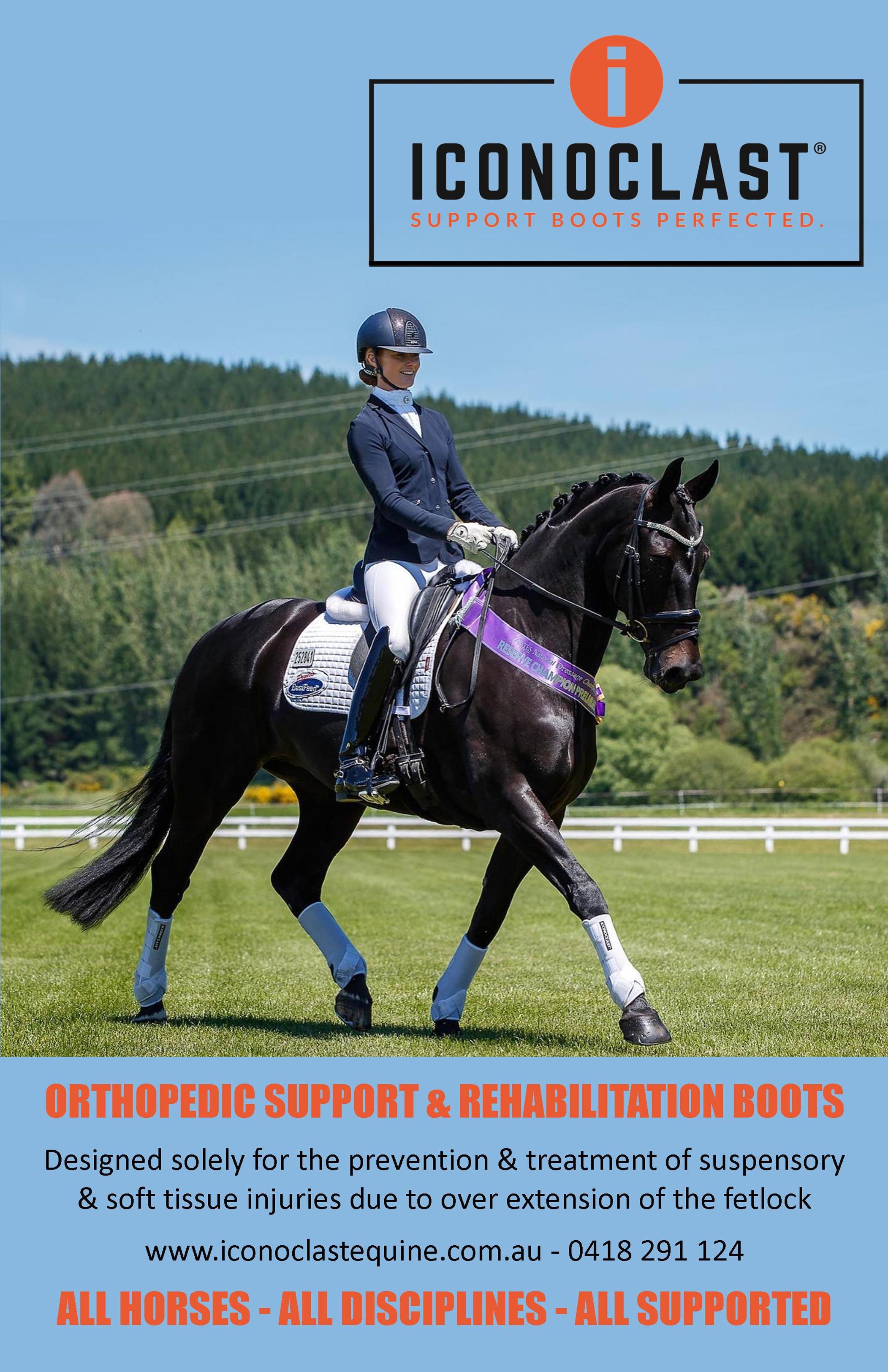
It’s preferable that when you hold a bit up by its rings, it falls naturally into a ‘U’ shape (right) rather than a ‘V’ (left). The canons in a ‘V’ shaped bit tend to be too straight and will not encourage the horse to get a feel for the bit and thus gain confidence.
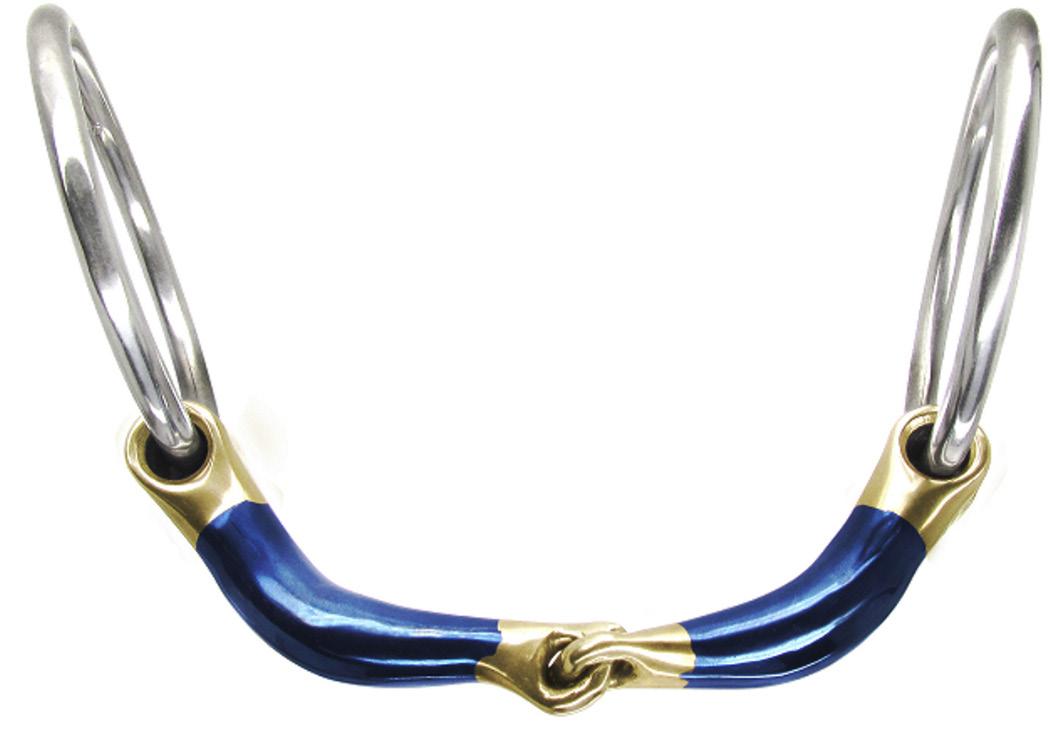
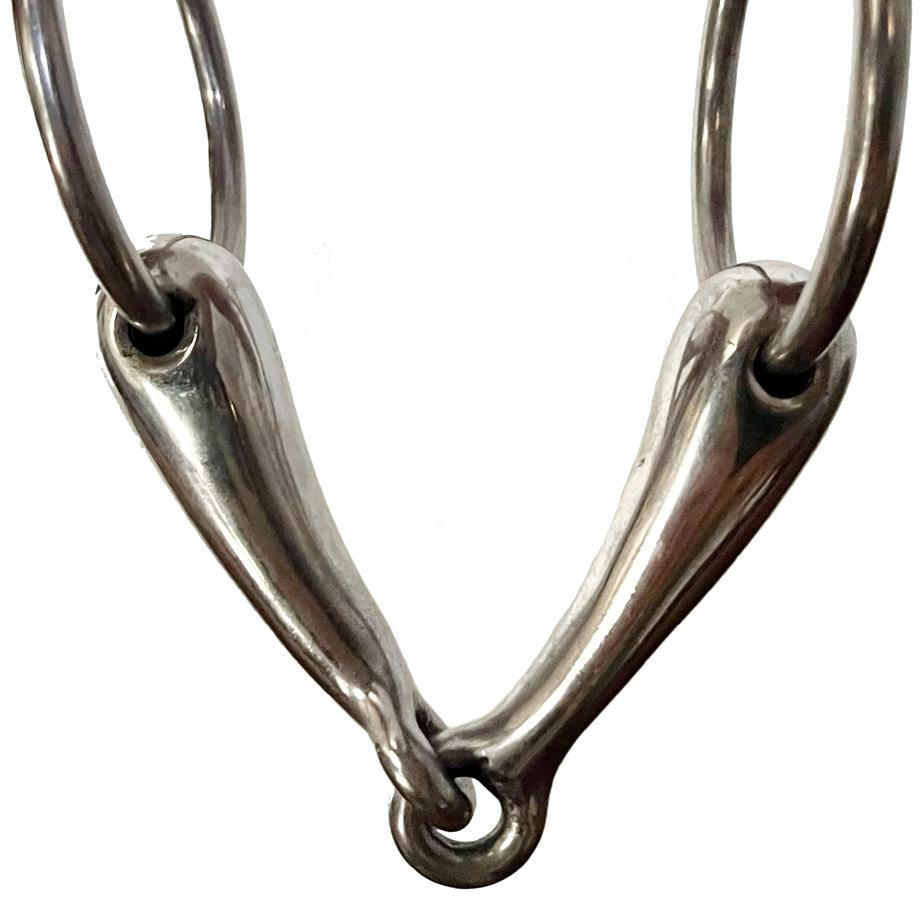
Another thing to consider is the size of your bit, I see far more injuries and wounds from bits that are too large than too small, even when there is little pressure on the reins. I generally try and use a bit that doesn't have a lot of movement in it - something like a Myler, a barrel bit, can be quite good for that reason. On the other hand, a bit with a lot of movement, such as a doublejointed snaffle, can be too much for a lot of horses, making them very anxious. Personally, I prefer not to use that type of bit until a horse is confident and well established in the contact.
Similarly, I don't use jointed bits on young horses because at some point, you may have to apply quite strong pressure. If you want them to turn right then they have to turn right, and you might need to open your right rein quite dramatically. With a double-jointed bit that might cause a lot of lateral movement – the bit will slide all the way over and those little joints can pinch on the inside of the lips and cause a bit wound.
Other than a rubber bit, I do like the full cheek 14mm thick barrel bit I had made (10mm bits are too thin – 12 to 14mm is preferable for a young horse). But you do need some kind of direct steering, and a correctly fitted full cheek design prevents the lateral movement common with eggbutts and loose ring bits, even when you do open a rein. And ergonomically speaking, it’s preferable that when you hold a bit up by its rings, it falls naturally into a ‘U’ shape rather than a ‘V’. The canons in a ‘V’ shaped bit tend to be too straight and will not encourage the horse to get a feel for the bit and thus gain confidence
Getting educated
Once your youngster is established in the basics, it may be appropriate to change their bit to one that allows for a little more finesse. Calling in a bit fitter at this point is a good idea. They will assess factors such as the shape and formation of the horse’s mouth (do they have a skinny tongue or particularly wide bars?); their anatomy and biomechanics; their level of training; your level of skill; and how you and your horse function as a pair.
A horse needs to learn to connect with the bit and communicate with it, rather than be frightened of it. And of course, rider’s make mistakes, perhaps they’re unsteady in the hands, or they ask for a half halt when they didn’t mean to – the horse has to be confident enough in the bit that they forgive all that - but if they’re fearful of it, then they don't forgive those mistakes and become quite frightened of the bit.
It's about communication
In closing I would stress that when you’re choosing a bit for your breaker, look for one that moves very little in the mouth; is not too thin (shoot for 12-14mm); falls into a ‘U’ rather than a ‘V’ shape; and consider a full cheek to help prevent the bit sliding and causing injury. Finally, remember that a bit is all about communication, not control. More often than not, a stronger bit is not the answer, better education and greater understanding of, and confidence in the bit is.
As riders, I think we all need to take greater responsibility for how our horses are in the contact. And remember, generally speaking if there’s a problem it’s not always the rider’s fault, nor is it always the horse. It's a combination of you both - it's always a combination.
Anna is based in Chambers Flat, Queensland. To learn more about the expert services she offers, you can reach her at The Bit Fitter, through her Facebook page, or call 0407 689 155.
Vet Vibes
First aid essentials
Be prepared! It’s a great motto to live by.
Dr CLARE WILLIAMS-PATERSON of Apiam Equine Services gives some expert advice on putting together an equine first aid kit, and what you should prepare for.

Putting together a well-organised equine first aid kit is a great investment. These kits provide a ready and waiting tool, and should be made easily accessible to manage a frontline crisis - be it at home, during travel, or at an equestrian event.
Let’s face it, emergencies are part and parcel of owning a horse. They can happen at any time of day or in the dark of night, can be very random, and can involve any body system. Commonly, these emergencies range from lacerations, puncture wounds and broken bones, to colic, choke and eye injuries – to name just a few.
We all know that a horse’s favourite pastime is plotting how they can best cause their owner maximum stress at the most inconvenient moment, and being well prepared can help defuse the panic and stress associated with these often highly emotionally charged situations, while contributing significantly to your horse’s welfare, both during and after the crisis.
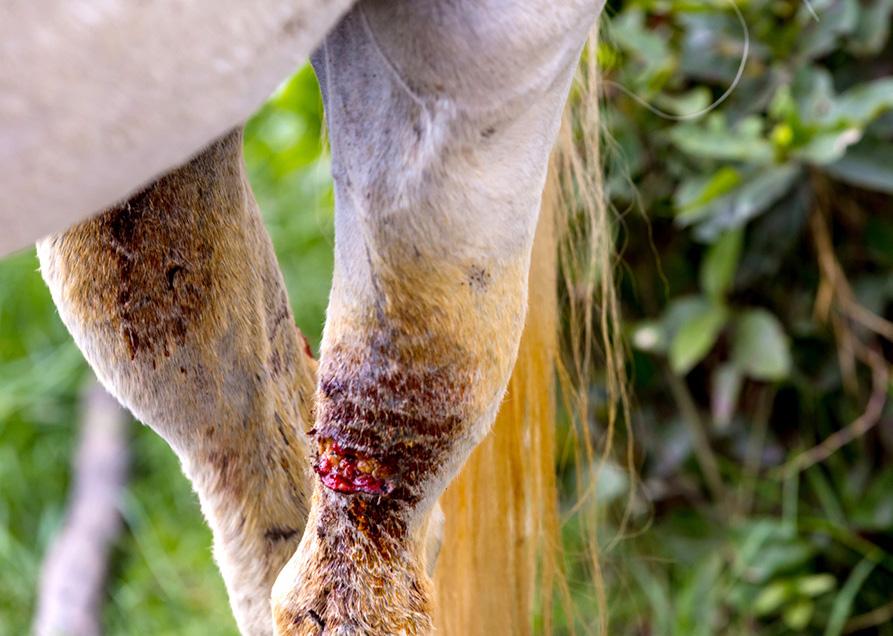
Once you have your basic kit together, maximise this preparedness initiative by taking the time to learn basic equine first aid skills. It also pays to be observant and understand what the baseline normal is for your horse.
What’s in the kit?
Be sure to select an easy to carry bag. Think practical and simple – you can always improvise and improve. For example, a first aid kit that’s stored in the barn at home has the scope to include more than say a backpack that you might carry during a bush ride – and this may vary again for the kit that is carried in the car or horse float to an event.
Physical Exam Tools:
• A digital thermometer
• Stethoscope
• Halter and lead rope
• Latex gloves
• A twitch
• A torch or headlight
• Hoof pick
• Hoof knife
• A couple of clean towels
Bandage Material:
• Pack 10cm x 10cm gauze swabs
• Roll of cotton wool
• Roll of cotton gauze (e.g. Gamgee)
• Non-stick gauze pads (e.g. Melolin)
• Non-adhesive wrap (e.g. Vetrap)
• Adhesive wrap (e.g. Elastoplast)
• Poultice (e.g. Animalintex)
• Duct tape
• Blunt tipped bandage scissors
Wound Care:
• Packs of saline solution for cleaning wounds/rinsing eyes
• Dilute iodine solution (e.g. Betadine) or chlorhexidine for cleaning wounds
• Bottle of artificial tears lubricant
• Fly repellent
Other: Wire-cutters and pliers (horses are experts at getting tangled up in wire fencing), baling twine/hay string, and cable ties
Emergency phone numbers: These days, most of us store numbers in our smartphones, but it pays to have a list in your kit in preparation for the worst case situations where your phone is damaged, lost, or has a flat battery, or you are incapacitated and unable to operate the kit and/or phone.
Back up emergency items: Fresh or open wounds involving a limb are a common case scenario. Obviously, it is critical to stop any bleeding and this is usually achieved by applying pressure. However, on the lower leg there is insufficient tissue to protect tendons and skin from this pressure, so appropriate padding is essential to prevent more damage.
And be prepared to think outside the square in an emergency. The polo wrap used to support tendons and ligaments from brushing and interference during work can double as an effective first aid bandage. For padding, cotton sheets or pillow covers cut into strips can serve you well, and individually wrapped sanitary pads are both sterile and inexpensive. Thick or thin and cut to size, these can make effective wound dressings. Also, never underestimate the absorbability and padding value of the disposable nappy!
Important to remember is that there is such a thing as over-cleaning wounds. Overly aggressive scrubbing can slow down blood clotting and make things dramatically worse. Application of irritant substances may also adversely affect local tissue and/or deeper structures such as bones. In the case of many wounds, less is more – remove gross contamination and cover appropriately, even simply with protective gauze or gauze moistened with sterile saline solution and wait for your veterinarian’s expert assessment.
Vital information
Taking your horses’ vital signs (temperature, heart rate and respiratory rate) provides invaluable information. But a note of warning here, only perform these checks if it is safe to do so. Horses are big, strong, fight or flight animals and when in pain they are usually not themselves and may not respect your personal space. Sometimes it is safer to wait for help.
Apiam’s equine veterinary credentials are well-founded with a growing number of purpose-built dedicated Equine Vet Clinics and Referral Hospitals located in Victoria, New South Wales and Queensland, working alongside our network of mixed practice clinics in delivering quality equine veterinary care.
Scenic Rim Veterinary Service
Beaudesert QLD
Agnes Banks Equine Clinic
Agnes Banks NSW
Hunter Equine Centre
Scone NSW
Victorian Equine Group
Bendigo VIC
Gippsland Equine Hospital
Maffra VIC
Southwest Equine Veterinary Group
Warrnambool VIC
Find out more by visiting the Apiam Animal Health website & view the equine product range on Country Vet Animal Supplies
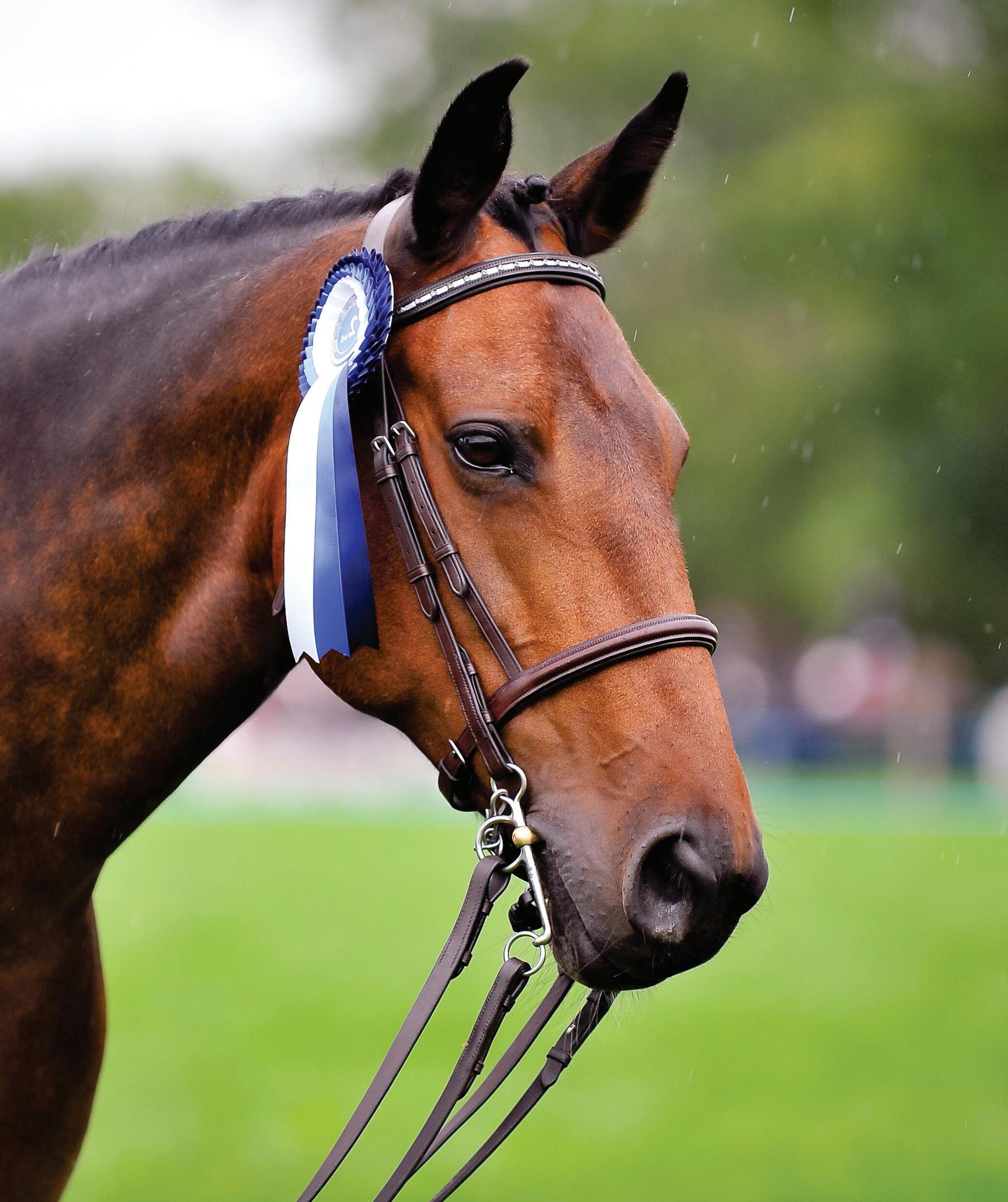
APIAM.COM.AU COUNTRYVET.COM.AU
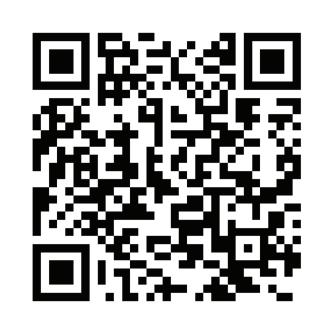
Healthy animals – happy people
APIAM.COM.AU
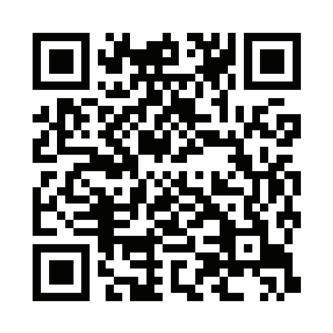
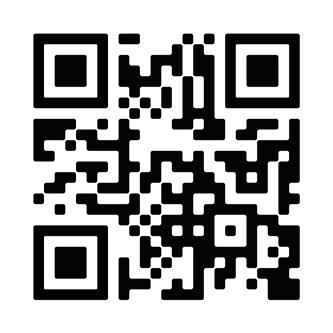
In many instances, vital sign numbers relayed at the time of calling your veterinarian can be helpful in assisting them to gauge the severity of the situation, and occasionally, whether any medication should be administered before their arrival. However, for these numbers to be of real value, you need to know your horse’s normal numbers. A normal temperature for an adult horse is 37.2-38.3°C; a normal heart rate is 28-44 beats per minute (which is approximately half that of ours); and a normal respiratory rate is 10-24 breaths per minute (a rate similar to ours).
Aside from respiratory rate, you can’t guess the numbers just by ‘eyeballing’ the horse. For example, a horse may not be obviously sweating but could still have an inappropriately elevated temperature. So, you must measure their temperature with a thermometer, and this brings us to how to take an accurate temperature reading! The digital thermometer should remain inserted in the horse’s rectum for the full length of time required (this varies between thermometers) - wait for the beep before removal.
Your horse’s respiratory rate is easy to calculate. Simply count the number of breaths they take in one minute while watching the flank or nostril. To check their heart rate, feel for the pulse in the artery on the inside of their jawbone. When time is of the essence, count the number of beats over 15 seconds, multiply that number by four and this will give you the resting heart rate. Alternatively, a stethoscope can be used to listen to the heart rate on the left side of the horse’s chest (over the ribs and just behind the elbow). Palpating the pulse and listening through a stethoscope at the same time can help make sure that you are not double counting heart sounds. Because of the great variability among different breeds and classes of horses, it is wise for owners to make a point of knowing their horse’s normal heart rate.
Ideally, in case of your horse becoming colicy, you should also be familiar with normal gut sounds. You want to hear sounds of movement; there should be gurgles in an area and then similar sounds a bit further down the line. Silence is abnormal as are over the top ‘laundry sounds’ that may indicate overactive bowels.
To get a good perspective on normal, use a stethoscope and practice listening to regular gut sounds across both sides of the abdomen while your horse is healthy.
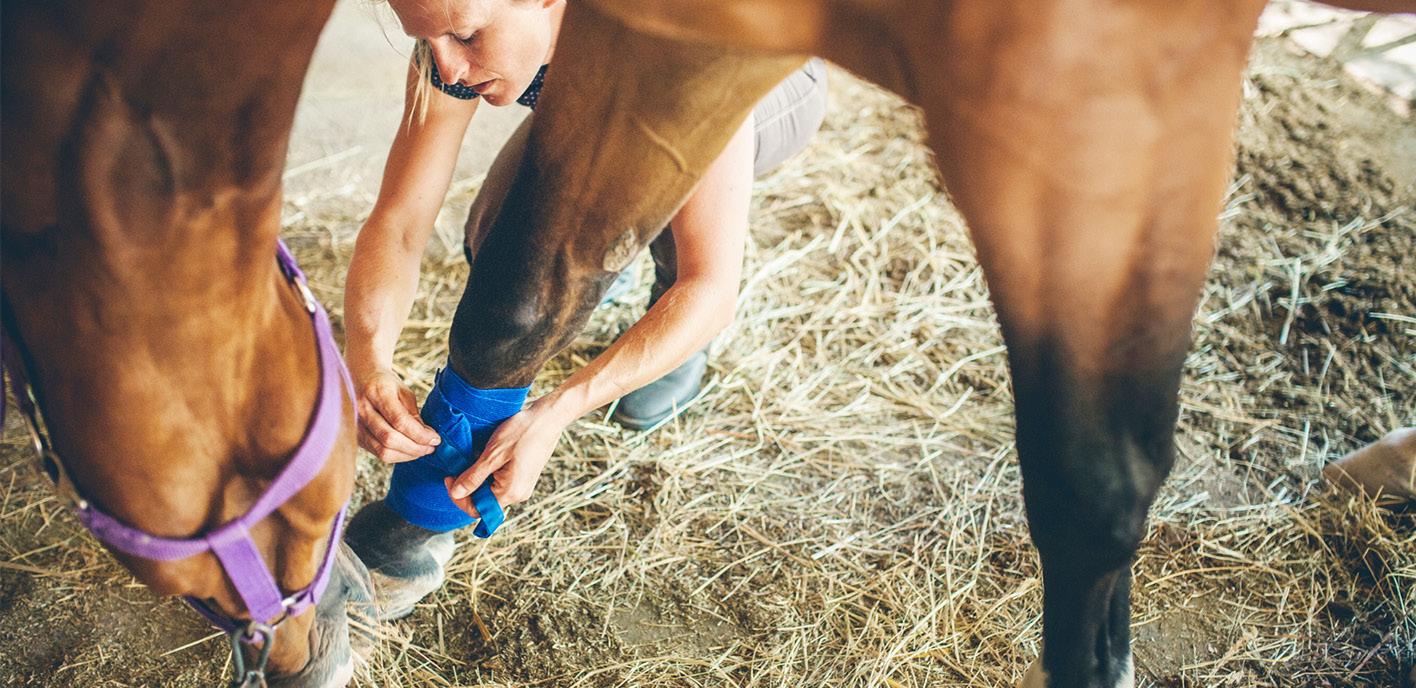
It is also important to know what else equates to normal for your horse; their usual appetite, water intake, urine and manure output, and their day to day behaviour and activities.
Prescription medications
Horses experiencing colic (abdominal pain) and eye injuries are common situations where medications have sometimes been inappropriately administered prior to veterinary arrival and assessment.
It is highly recommended to refrain from medicating your horse until directed to do so by your veterinarian. The last thing you, your horse, or your vet need in an emergency is a delay in achieving a diagnosis and treatment plan due to the potential masking effects of certain medications, or to inappropriate dosing.
Whilst the full scope of equine emergencies and their management is not possible to cover here, remember that common things are common. For first line basics, keep it simple, stay safe, and as much as possible, be prepared –then you can be confident that in a crisis you can offer the very best help you possibly can.









